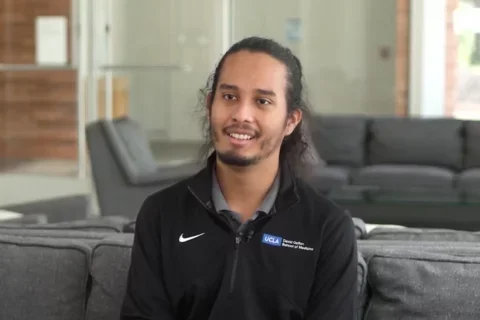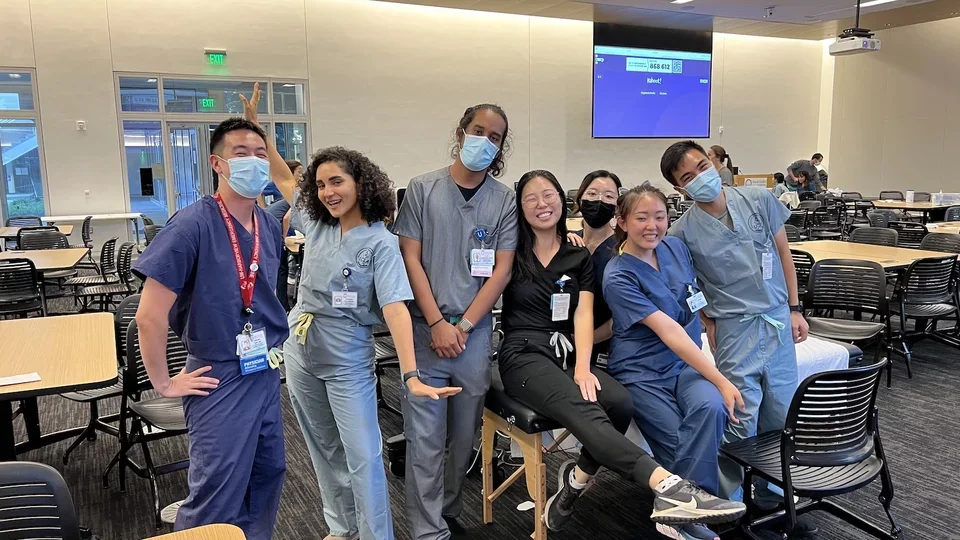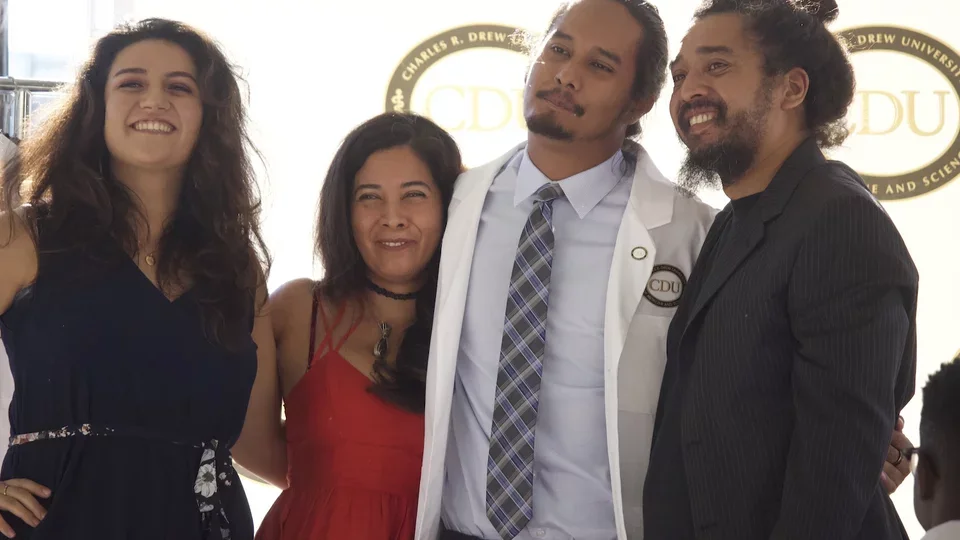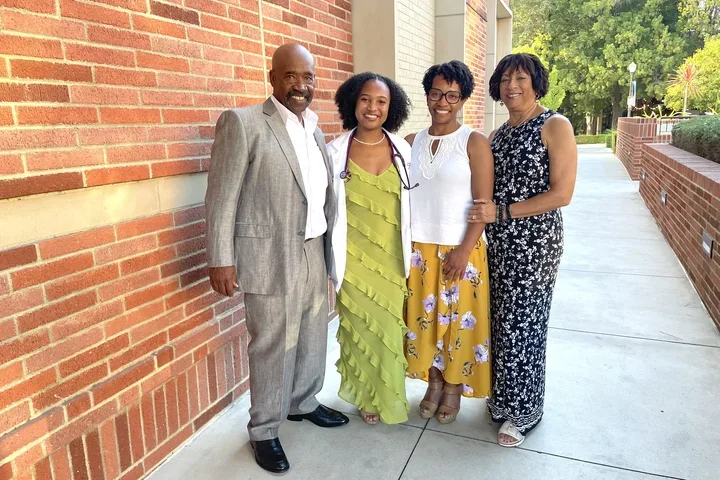Becoming a Doctor: Ilich Rodríguez-Rivas
Student Spotlight

How to Get Into UCLA Medical School
Ilich Rodríguez-Rivas was busy completing his undergraduate studies at the University of California, Santa Barbara when a seminar by Santa Barbara Street Medicine changed his future.
The pre med seminar covered issues such as inequitable healthcare access, food insecurity, and lead poisoning.
Inequitable healthcare access, food insecurity, and lead poisoning.
Rivas knew these issues well. They’d been daily realities for him as a kid. But he realized, as an adult, he could actually do something about these problems.
“I saw how the doctors from Santa Barbara Street Medicine were working to mitigate disparities,” Rodríguez-Rivas says. “And that’s when I realized I can make the difference I want in my community through medicine.”
Applying to Medical School During the COVID-19 Pandemic
Rodríguez-Rivas graduated from UC Santa Barbara in 2020, the height of the COVID-19 pandemic. Applying to medical school amidst physical distancing proved a lonely process.
“Being a first-generation student without any friends or family members in medicine, I didn’t have anyone to lean on, and with the pandemic, it was nearly impossible to cultivate new connections and build the support systems that could help me with my goals,” Rodríguez-Rivas explains.
Rodríguez-Rivas adapted by participating in two pre-medical programs at the University of California, Los Angeles (UCLA):
- The UCLA/CDU Summer Health Professions Education Program (SHPEP) at the David Geffen School of Medicine at UCLA (DGSOM), UCLA School of Dentistry, UCLA School of Nursing, and the Charles R. Drew University (CDU) School of Nursing.
- The UCLA Pre-Medical Enrichment Program (PREP)
These programs offered the support he needed to navigate the medical-school application process. They also helped him pinpoint where he wanted to go.
“I always knew UCLA was my number one choice because I had done those two programs, and I fell in love with the mission, with the people, and with the students,” Rodríguez-Rivas says.
He sent off applications and tried to stay calm as he waited for responses. After all, he couldn’t control what happened next, and if he didn’t get into his top choice, he could be happy going somewhere else.
Fortunately, Rodríguez-Rivas had nothing to worry about. He earned acceptance into the Charles Drew University (CDU)/UCLA Medical Education Program, which he started in 2022.

(Surviving) a Day in the Life of a Med Student
Rodríguez-Rivas finds life as a medical student challenging, if not surprising.
“I want to say it’s exactly how I expected it to be: Very difficult.”
The most difficult part isn’t the rigorous training or academic demands; it’s simply finding time for himself.
“There are days where I feel like I have to study all day, or I have to network,” he says. “Just finding time for myself, whether it be going out to play soccer or reading a book, is difficult because there’s so much to do.”
Rodríguez-Rivas navigates med-school pressures by occasionally pacing around his room and often leaning on his classmates, mentors, family, and UCLA faculty and staff. He also practices reflection and appreciation.
“Before this, I didn’t realize how little 24 hours are in a day, and now I appreciate all 24 because I make use of every single minute.”

Giving Back to the Community
Rodríguez-Rivas hasn’t yet decided what specific speciality he wants to pursue, but he knows exactly where — and who — he wants to serve.
“I want to work in a community similar to, if not the same one, I grew up in,” Rodríguez-Rivas says. “That’s part of the reason I’m so excited to be here because I know here I’ll receive the training to be an excellent doctor, not only in the community I grew up in but any community in the country, in the world.”
He hopes to break the cycle of disparity, to ensure underserved communities no longer accept the unacceptable, like he did growing up.
“You shouldn’t be, as an 8-year-old, translating in the doctor’s office, but I was,” Rodríguez-Rivas says. Translating between his Spanish-speaking parents and their predominantly English-speaking physicians inspired him to get involved with the Medical Spanish Interest Group and break down communication barriers in the health care system.
Moving Forward: Enjoying the Journey
During trying times, Rodríguez-Rivas likes keeping his eye on the big picture, the ultimate goal beyond his training.
“It’s tough now and there are tough times ahead, but that’s okay because I’m where I want to be. I’m on the path to becoming the medical professional I want to be.”
He finds fulfillment in acknowledging how much progress he’s already made. For example, while volunteering at a health fair, Rodríguez-Rivas performed physical examinations, something he couldn’t have imagined doing a few years ago.
“My hope for these next four years of medical school is that I continue to fall in love with the profession that I’ll be doing for the next 50 years.”
Med School Advice - Quick Tips
- Take advantage of pre-medical education and enrichment programs
- Identify your “why,” the reason becoming a physician is important to you
- Cultivate a support system to help you through applications, as well as the challenging first years
- When day-to-day life gets hard or busy, reflect on the big picture
Med School Advice - FAQ
What Is a First Generation College Student?
A first-generation college student is the first in their family to attend college. Read more about first-generation medical students at the DGSOM.
According to the most recent report available from the Association of American Medical Colleges (AAMC):
- The average cost of attending one year of private medical school in the United States is $39,905.
- The average cost of attending one year of public medical school in the United States is $62,570.
See the costs associated with attending medical school at the DGSOM.
How Long Is Medical School?
Many medical schools offer a four-year medical education curriculum. After students complete this core curriculum, they spend several (3-7) more years in residency training for their chosen specialty.
How Hard Is Medical School?
Medical school is hard because being an outstanding physician or physician scientist is hard. Most medical schools design rigorous curriculums that prepare medical students for the range of challenges they’ll encounter every day as practicing physicians.



